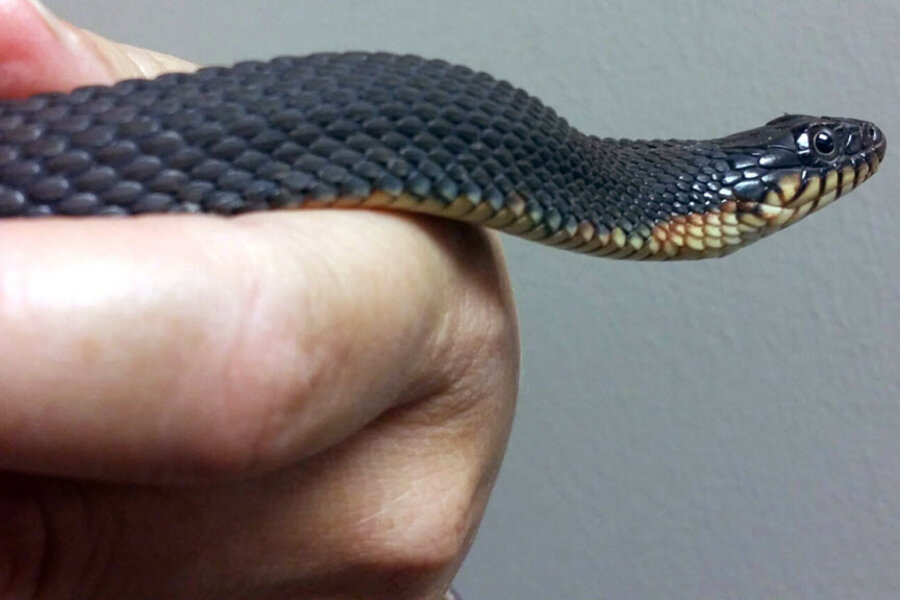This snake gave birth without a male: How common is parthenogenesis?
Loading...
A rare case of parthenogenesis has been discovered in a water snake that has given "virgin birth" without contact from a male in eight years.
This birth from a single female is another piece in the puzzle of a phenomenon known as parthenogenesis, as researchers are more frequently finding animals that reproduce singly.
The discovery that a female yellow-bellied water snake at a nature center in Missouri had given birth surprised an intern who was making a routine check of the animals.
This snake gave birth last summer – also without any fertilization from a male – and the two offspring are on display at a nature center in St. Louis. The batch born this summer did not survive.
"Virgin birth" is common in insects, but it also occurs in reptiles, fish, birds, and amphibians. It does not occur in mammals. The snakelets in Missouri are the first example of parthenogenesis observed in a yellow-bellied water snake.
Parthenogenesis was discovered in the 1800s with domesticated birds, according to an article by Royal Society Publishing. The first studies involved turkeys. Many parthenogenetic offspring were born with abnormalities, but some could live and reproduce normally.
On a cellular level, parthenogenesis occurs when smaller cells produced alongside an egg fertilize the egg rather than decaying normally.
Experts once thought parthenogenesis was an adaptation of animals in captivity, since that is where it had been observed, but in 2012, researchers found cases of single-parent fish in the wild. Andrew Fields of Stony Brook University and his colleagues were sequencing the genome of 190 endangered sawfish, and they found seven whose "parents" were genetically identical – meaning both parents were the same fish.
As interesting as the discovery was, Warren Booth of the University of Tulsa told The Christian Science Monitor it was not helping the species. "Essentially you are eliminating all variation across the genome so it’s a very deleterious, a very bad thing to occur."
It is possible that the female snake had been storing sperm inside her since her potentially more amorous past in the wild. However, Robert Powell, a biology professor at Avila University, said this is unlikely, however, because animals can usually store sperm for only a year, or three at most. This new mother had lived alone for eight years.
This report includes material from the Associated Press.






